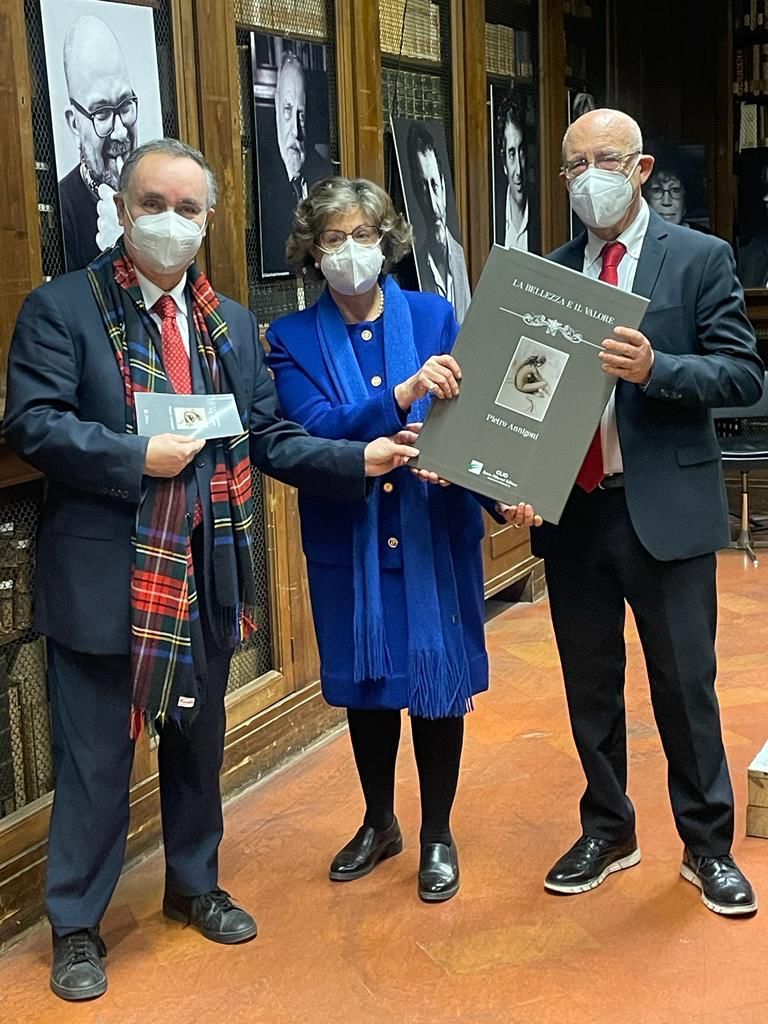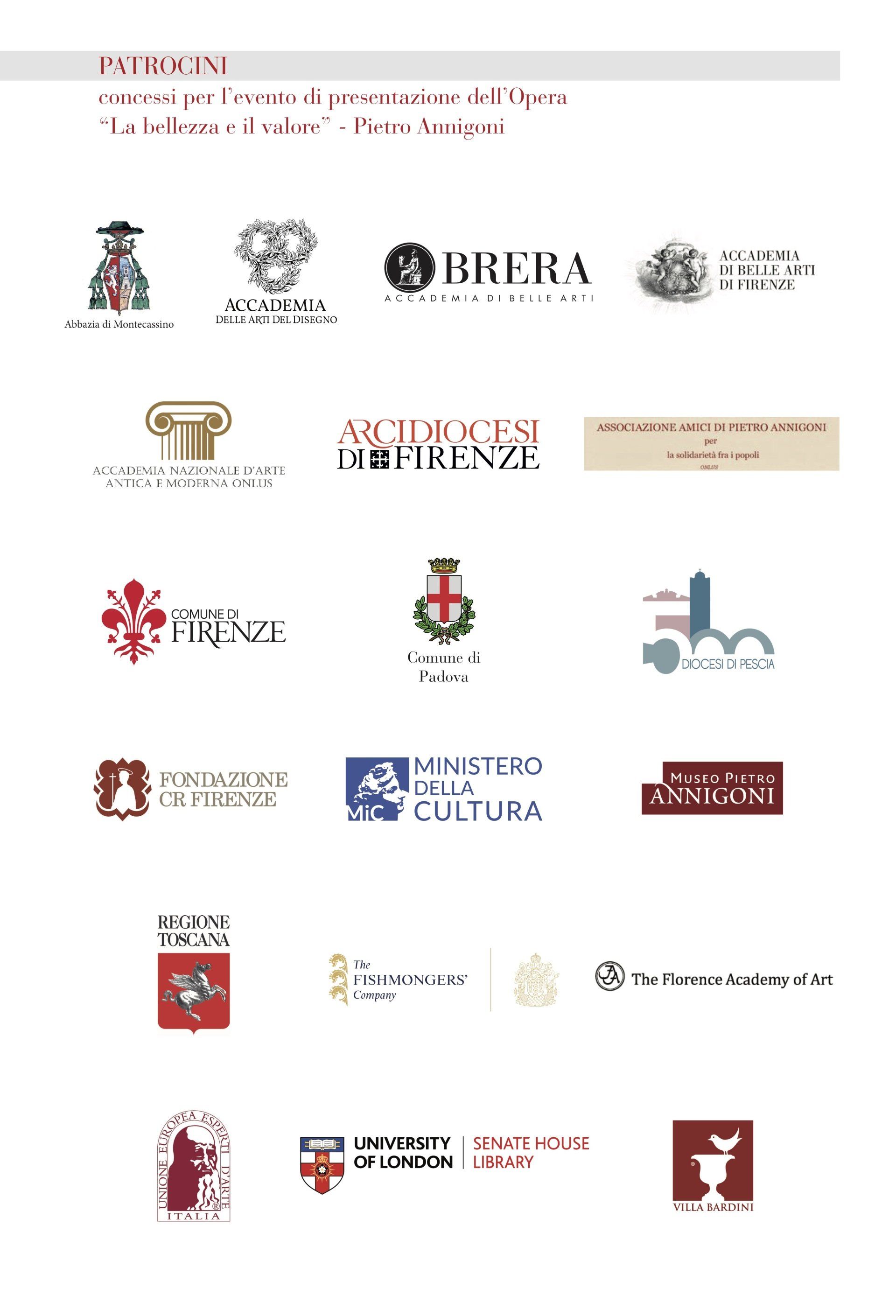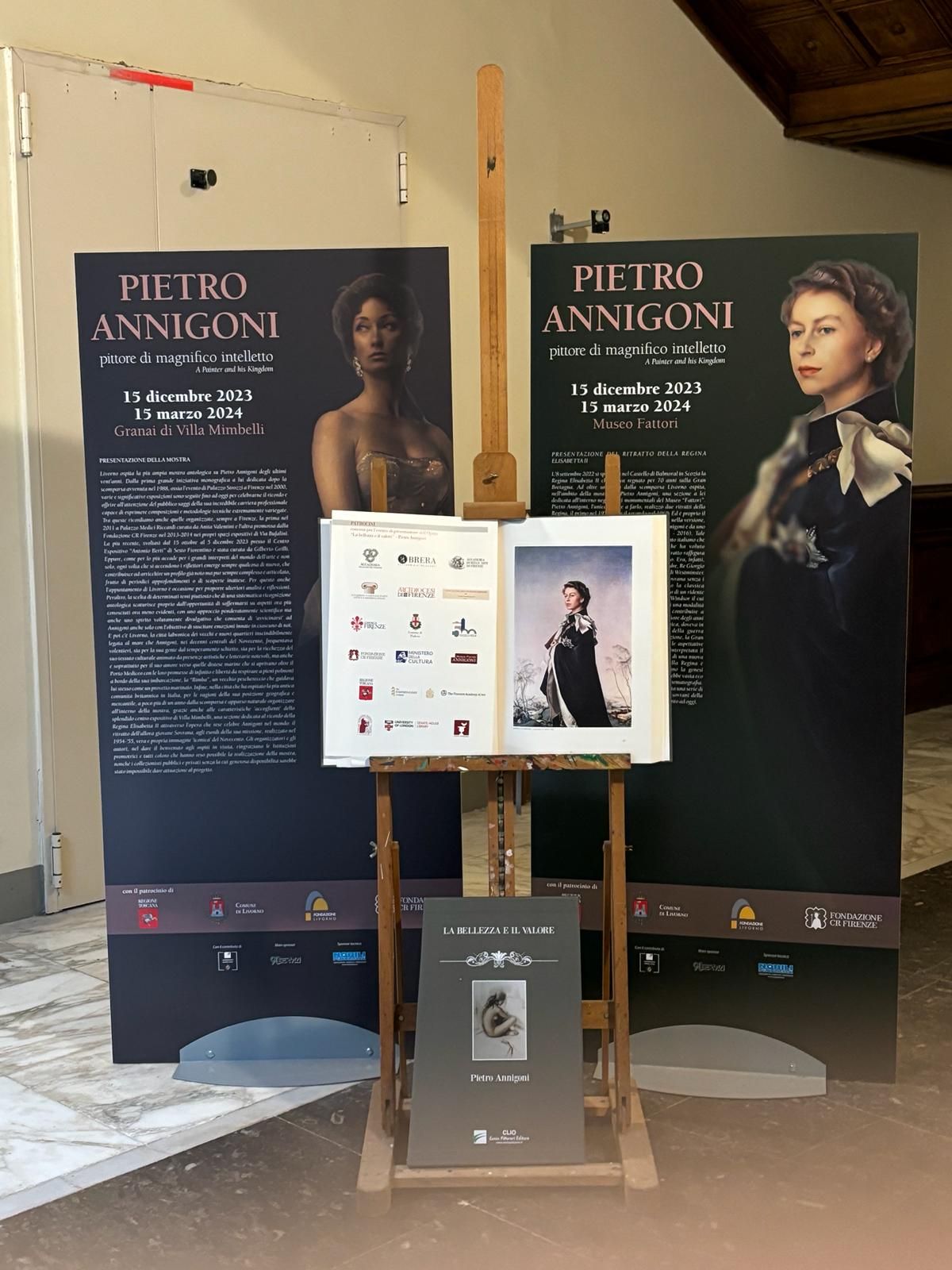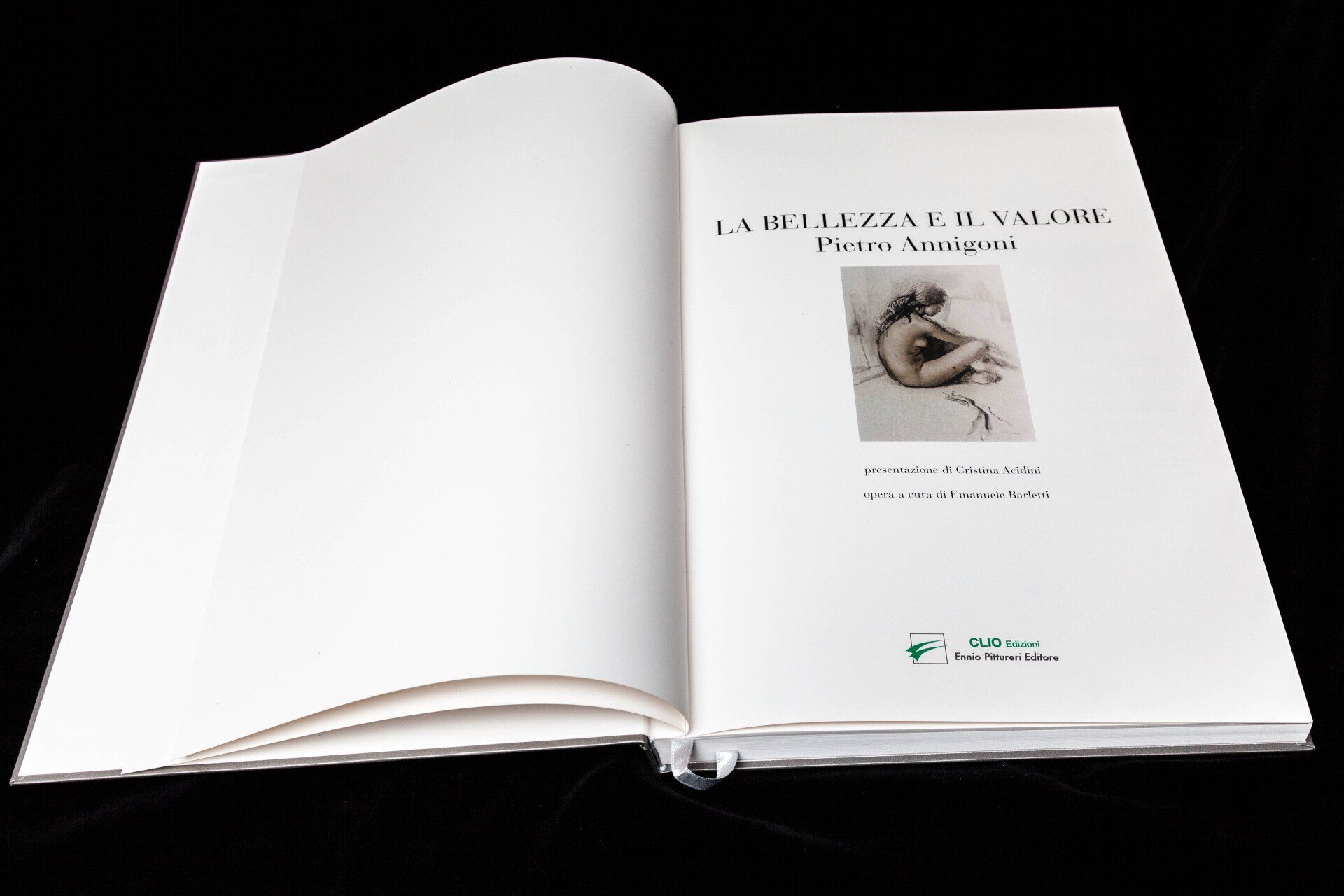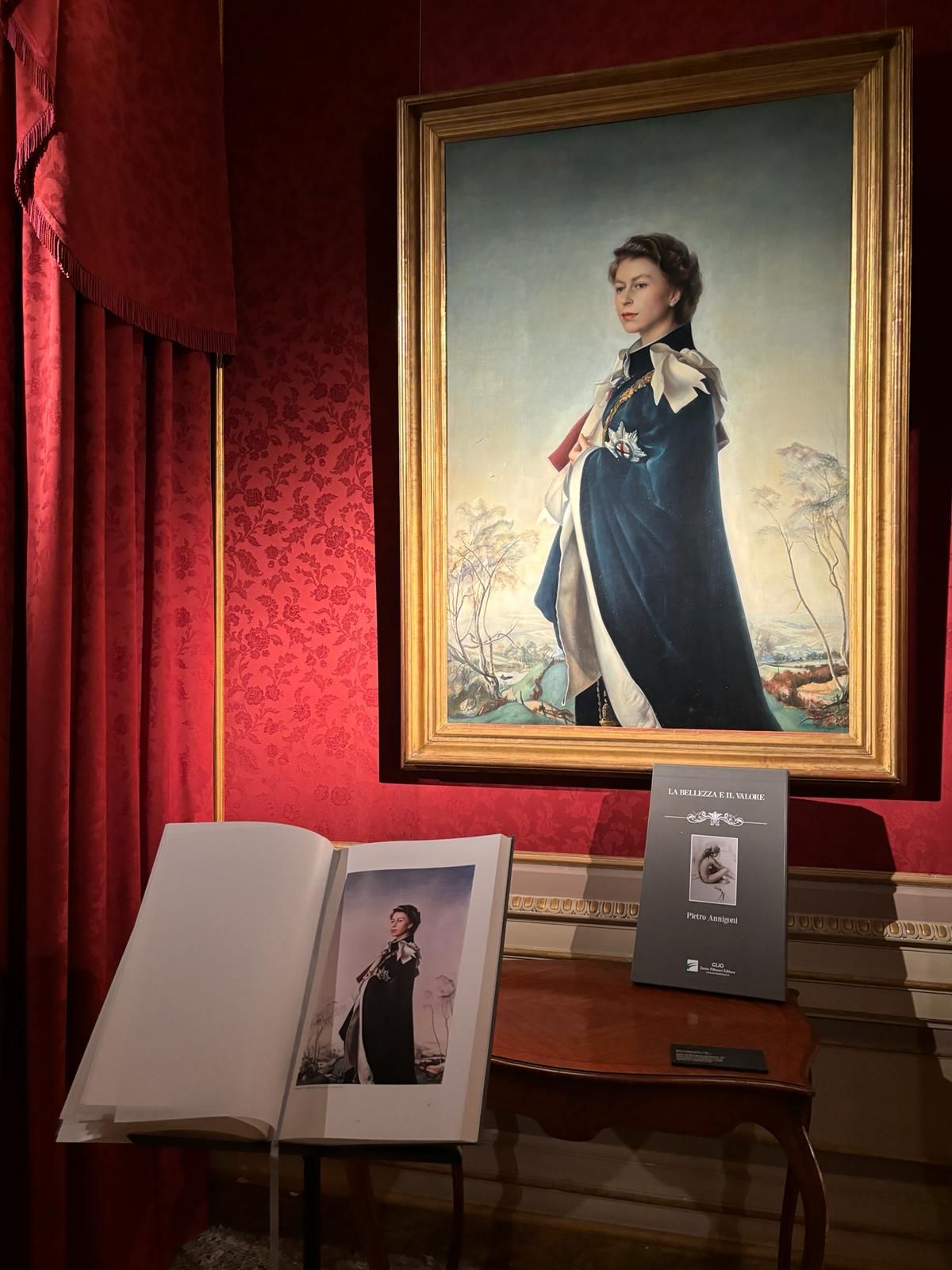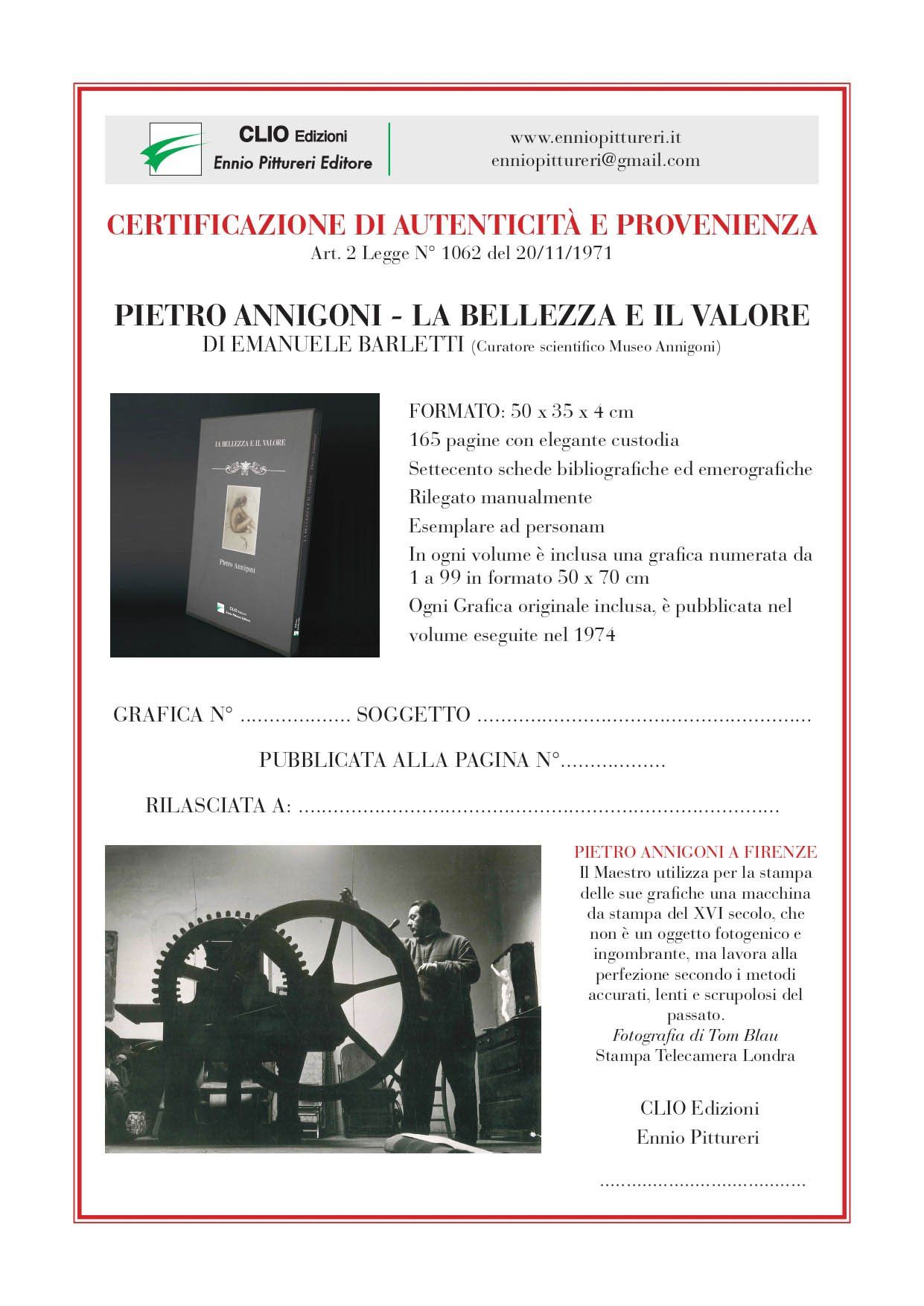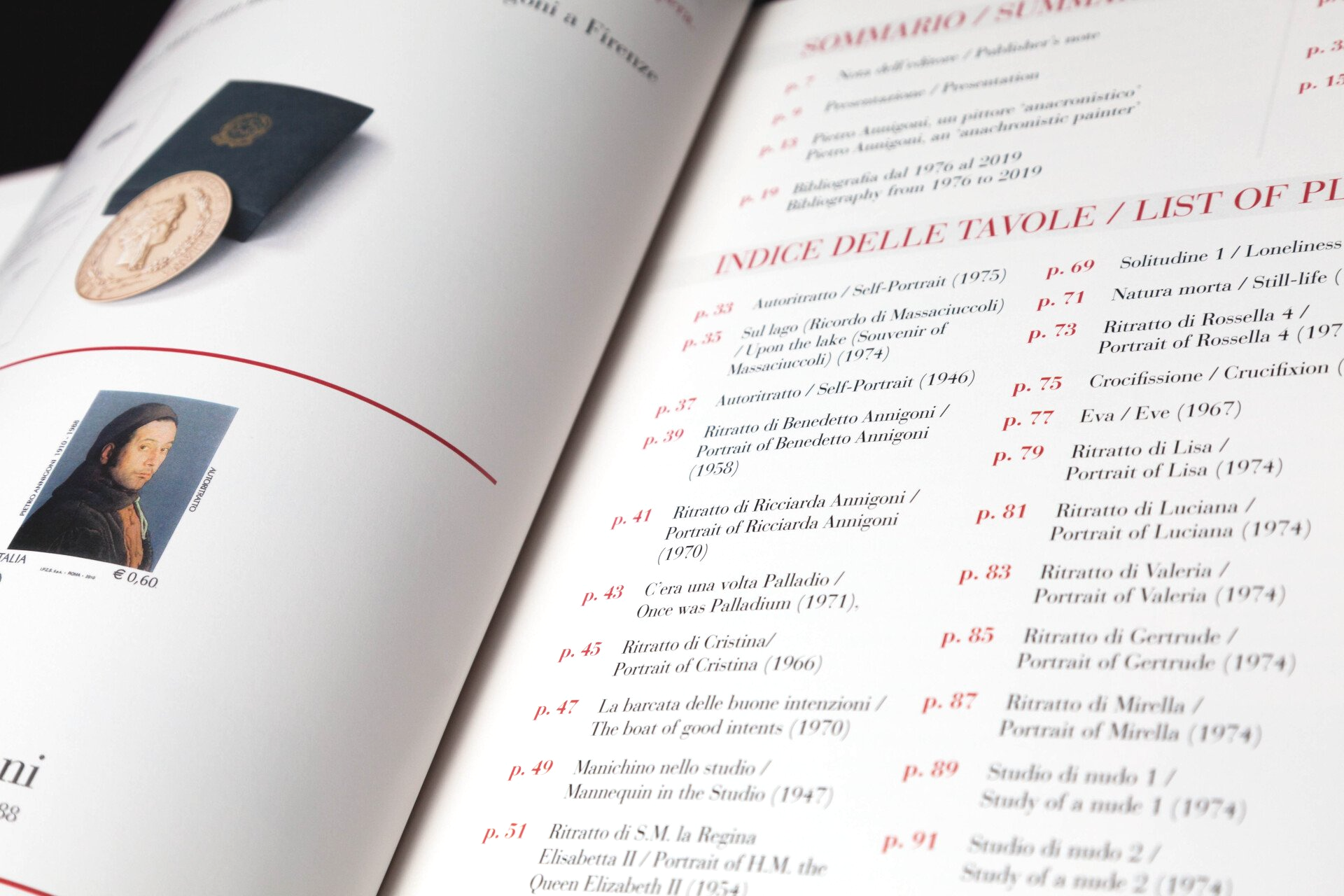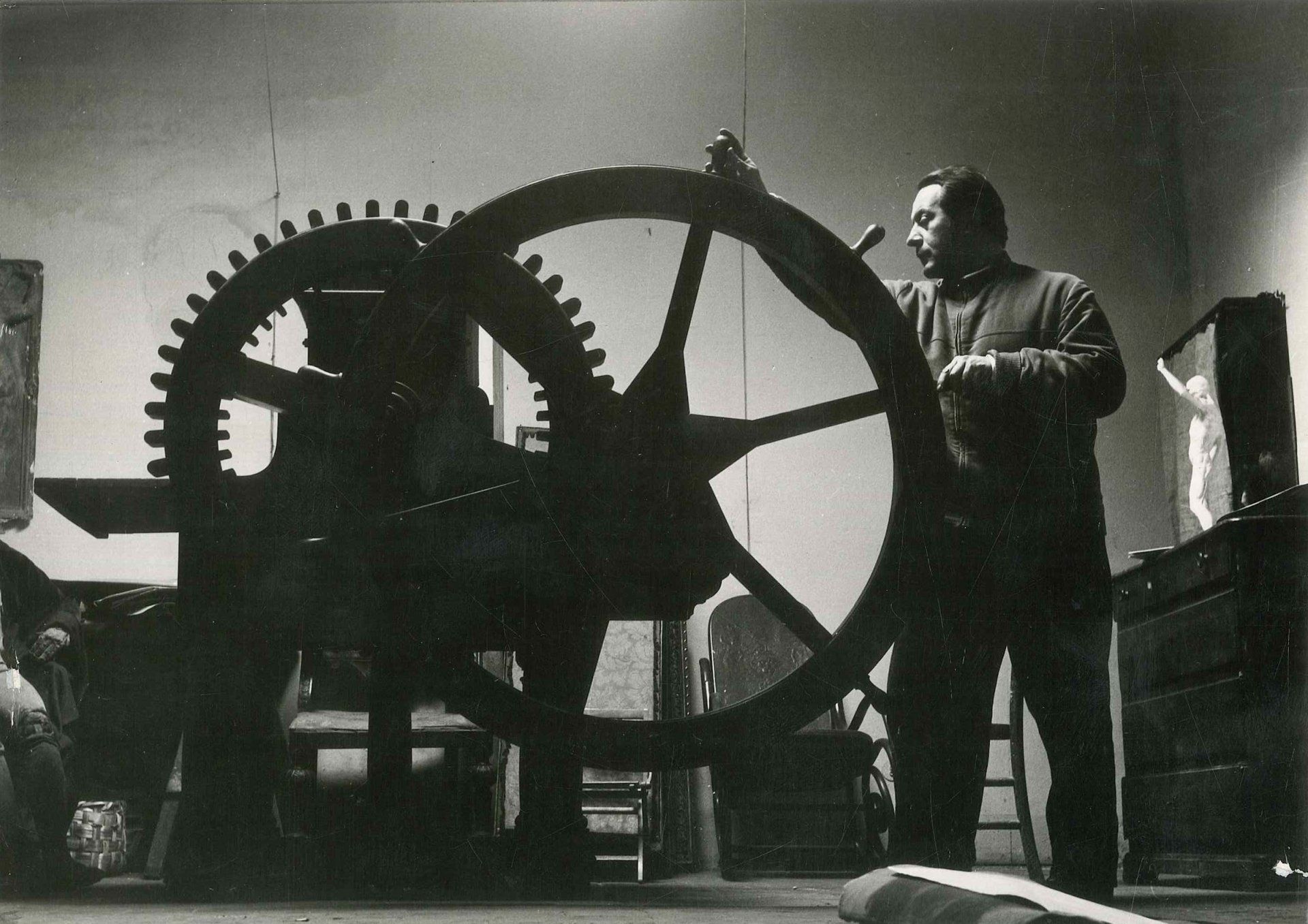PREVIEW
At the Oblate Library, in the presence of Dr. Gabriella Farsi on behalf of the City of Florence, the national preview of the work was held.
The author, Professor Cristina Acidini, President of the Accademia delle Arti e del Disegno, the curator of the work Dr. Emanuele Barletti, Scientific Director of the Annigoni Museum, and the publisher Ennio Pittureri were present.
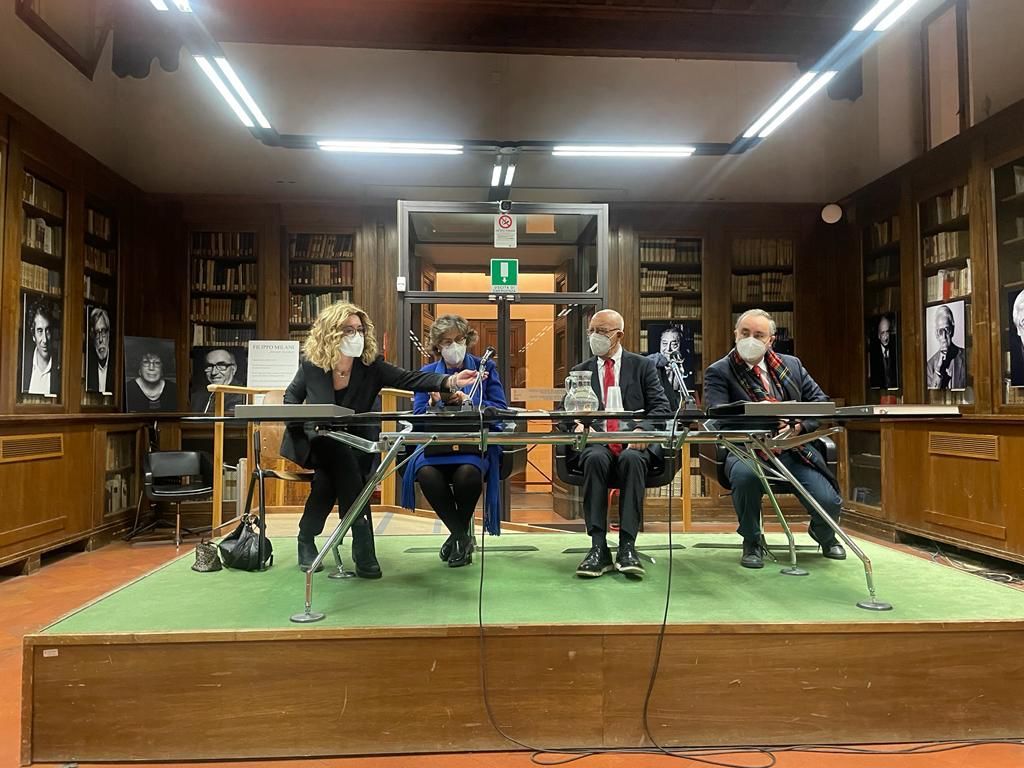
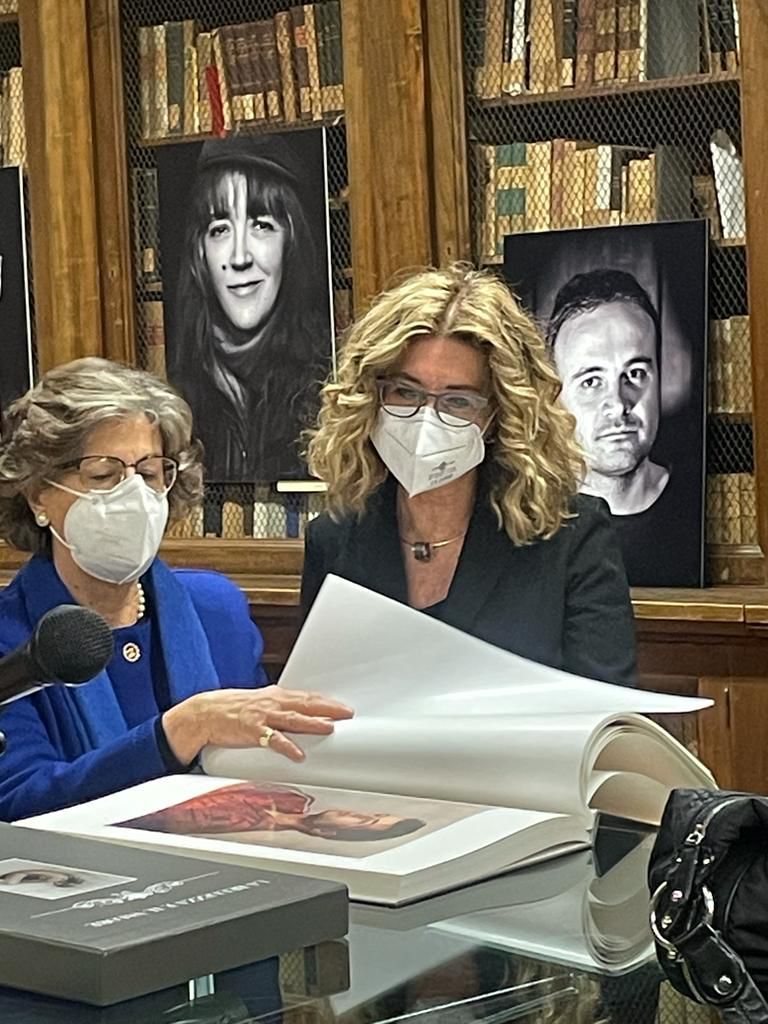
When in far-off 1976 I published, at Pietro Annigoni’s request, the enormous work curated by Ugo Bellocchi, which departed ‘unconsciously’ from the tradition of monographs for its large format of 50 x 70 cm, the Maestro immediately understood the expressive power conveyed by the reproductions in the volume.The works appeared as if in a gallery, illustrating Annigoni’s artistic progress, so much so as to be called after his death ‘the testament of the Maestro’ by the Corriere della Sera.
At the time I was a very young publisher and I was affectionately warned by Annigoni about the publishing risk of this important enterprise. He said to me: ‘You know, Dottore, I have so many enemies, are you sure you want to do it?’ He was referring to certain avant-garde critics who did not appreciate figurative art.
I got to know him at Ponte Buggianese, in the province of Pistoia, introduced byGino Lepri, a Pisan gallery owner and friend who talked so much about him as to make me fall in love with his painting. At that time Annigoni was working at Ponte Buggianese on the frescoes for the church of the Santuario di Maria Santissima del Buon Consiglio, of which he had expressly chosen some reproductions to be included in the volume.
The publishing project was carried out in collaboration with the artist, in a numbered edition signed by the Maestro, who made ten original lithographs especially for the volume: three nudes, two landscapes and five heads.
This made it possible to assign a lithograph to each volume; with Annigoni we decided to reproduce the ten subjects in the work, thus confirming their authenticity. He wanted to thank the reader with a signed dedication beneath his portrait: ‘To whomever, turning the pages of this work, will find some enjoyment in my painting’.
Fate would have it that in 1990, during the removal by a Bolognese logistics and transport firm of some volumes prepared for binding, they were irreparably damaged during unloading. The original lithographs and the signed page were saved, because they were stored elsewhere. This happened when the Maestro had already left us, many years after the publication of the volume. A reprinting was impossible, because the layout used to produce the books had become obsolete. The new digital technology of today can overcome such obstacles.
In the present edition taken from the earliest 1976 one the Maestro’s page of thanks and an original lithograph are included separately. Each of the works selected for the re-edition is a faithful copy, including the pagination, of the ones in the initial volume. Obviously the size of the printing is limited by the number of lithographs available and, in practice, the new edition replaces the copies destroyed.
At a distance of over forty years from the first monograph the Maestro’s profile has been updated with a rich bibliography added to the previous one, which was already considerable.
The present edition also in large format, is however smaller than the 1976 one, with the advantage that it is easier to consult. Moreover it contains numerous reproductions not present at that date, which help to trace the artist’s chronology.
I am convinced that this work will give a more complete understanding of to the initial project of the Maestro, who wanted those who loved his art to be able fully to enjoy it.
Special thanks are due to Cristina Acidini, President of the Accademia delle Arti del Disegno in Florence, for her excellent presentation, and to Emanuele Barletti, scholarly consultant at the Museo ‘Pietro Annigoni’ in Florence, belonging to the Fondazione Cassa di Risparmio di Firenze.Barletti is one of the most committed and profound students of the Maestro’s work, and has generously curated the new edition including the updated bibliography and an accurate repertory of places in Italy and in the rest of the world where it is possible to admire works by the Maestro. All plates are colour interleaved and protected with tissue paper.
Ennio Pittureri, Publisher
Annigoni's sumptuous paintures, exhibited in basilicas and museums, makes the Author himself part of Italian cultural heritage, like other great Masters whose works carried out our identity.
Annigoni, speaking of himself and of his own way of being an artist, would later assert: ‘...As for myself, the only innovations I care about and that prompt me to act are my own joys, my own sorrows, my emotions and enthusiasms in the life that has been granted to me, in the world that is mine...’. The constant and continual practice of drawing and the being ever more master of his own expressive means, without compromises, represented the only way to manifest his own feeling and his own ‘world’ (Pietro Annigoni, Firenze, Gonnelli, 1945).
In the meantime, however, the horizon of contemporary figurative art has undergone a profound change, so that the effort of Ennio Pittureri and mine in re-proposing Annigoni to the attention of the public would seem anachronistic, expecially through this Opera placed, moreover, in the context of value editions. Perhaps this is a niche operation, but reaffirms an underlying an element that we cannot ignore: the actuality, despite everything, of Pietro Annigoni in the modernity panorama that he experienced and manifested with the means of tradition.
Emanuele Barletti
Conscious of his own means of expression, he loved to repeat: “My frescoes, my great oils, my etchings, will remain in churches, museums over the centuries. The pictorial transformatiom so fashionable today, however, are destined to end in nothing, especially if they are made with glue, pieces of dry bread, strips of fabric... ".
Pietro Annigoni
Pietro Annigoni in Florence. The Maestro uses a 16th century printing machine to print his graphics, machine which is not only a photogenic and cumbersome object but works perfectly according to the accurate, slow and scrupulous methods of the past. Photography by Tom Blau, London Camera Print.
Annigoni was a versatile artist, working in watercolour, fresco, tempera and oil; he was a draughtsman, lithographer and engraver (he was also an illustrator for poetic and literary texts), and devoted himself to medallions and sculpture. He has been President of the Engravers of Italy, a member of the Academies of San Luca and the Arts of Design, of the Accademia Cherubini in Florence, and of the Royal Society of Portrait Painters in London. An artist of great charisma, he is well known throughout the world (Time magazine has dedicated seven covers to him). Benezit Dictionary of Artists.
Written in Italian and English, the text also includes a list of all the public places in the world where it is possible to admire Annigoni's works. Limited edition volume in approx. 35 x 50 cm format, printed in high quality digital color, on the same precious paper choosen by Annigoni himself, manually bound by master artisans with elegant case and an authentic signed lithograph attached.
The original graphics included in La Bellezza e il Valore - Pietro Annigoni was made with handmade paper by Cartiera Magnani di Pescia in Tuscany, active since 1401. Already Pablo Picasso in the years 1915-20 made use of paper produced by Cartiera Magnani, as well as Giorgio De Chirico, Salvatore Fiume and Giorgio Morandi. The Cartiera Magnani produces fine papers obtained entirely from cotton worked totallly by hand and characterized by natural coloring, absence of acids and softness to the touch, qualities that make it suitable for dry printing and press. The fine paper produced on Annigoni's own indication and used for the graphics combined with the volume is still in production and bears the name "Annigoni paper" in honor of the great Artist.
The book includes the most complete bio-bibliographic repertoire of about 700 items up to date and the list of the public places in the world where is possible to admire the artist's works.
Cristina Acidini Presentation
Emanuele Barletti Curator
Special thanks are due to Cristina Acidini, President of the Accademia delle Arti del Disegno in Florence, for her excellent presentation, and to Emanuele Barletti, scholarly Consultant at he Museum Pietro Annigoni in Florence, belonging to the Fondazione Cassa di Risparmio di Firenze.



